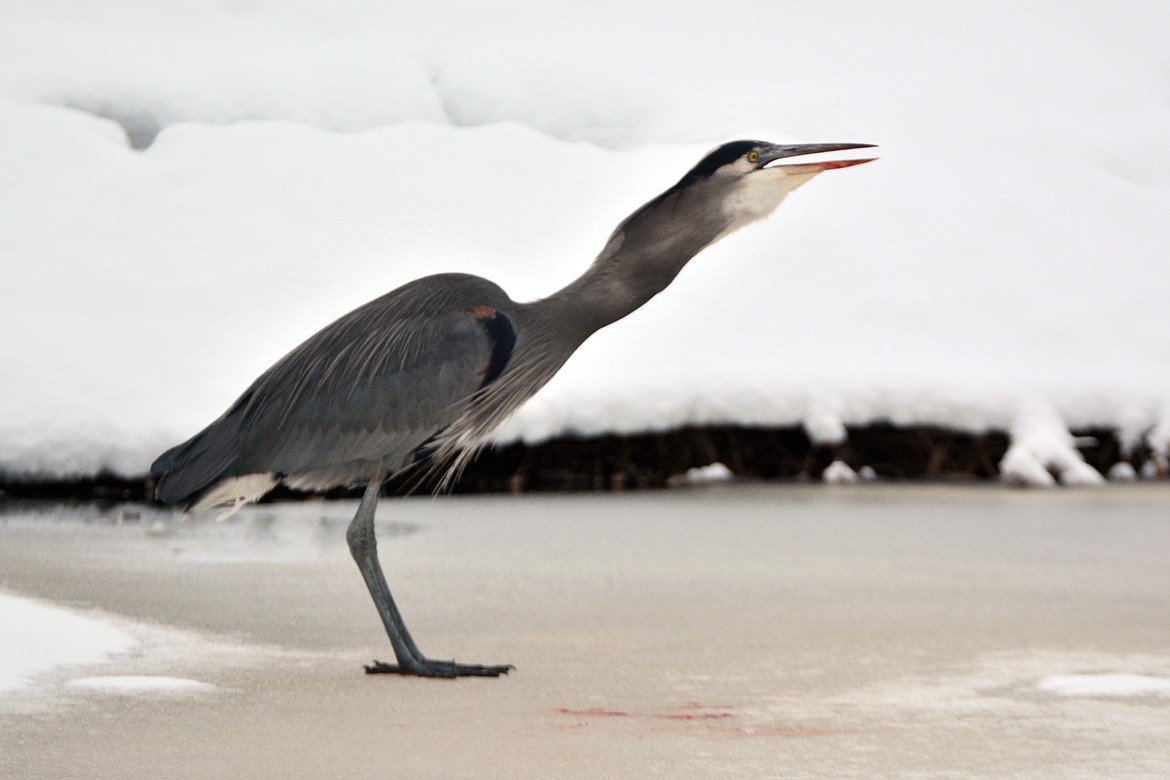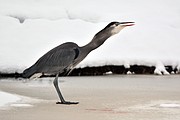Great blue heron: A fisherman with a stiletto beak
When I came upon the scene, I looked in amazement beside the narrow body of water to see a tall gray bird standing over the edge of the pond in total silence with a sizable fish in his stiletto-like beak.
He had a cautious and surreptitious action and movement, the caution and stealth of a hungry cat, but totally focused on his prize meal. It was a blueish gray bird with black eyebrows extended into several long plumes off the back of his head.
He took a step closer to the bank planning a strategy to swallow the sizable fish and turned his long yellow bill toward me as he looked in my direction. I noticed the feathers at the base of the neck as it dropped down in a kind of necklace. I realized it was a great blue heron and he was at the pond to get some easy fishing, but the fish he caught might be too big to swallow.
The hungry blue heron flipped up the fish head first and it went to the back of his throat and with a difficult swallow it was starting down his throat. He struggled for a minute and let the fish slide down his gullet as he swallowed several more times and then he was off with a squawking bark and a flap of his wings.
The great blue heron is known as one of the most common herons, often barking like a dog when startled. The great heron is often seen stalking small fish in shallow water. The heron will try to eat mice, squirrels and just about anything else it might come across, however they do prefer a main course of small fish, frogs, insects or snakes. The heron flies holding his neck in an S shape, with its long legs trailing straight out behind. The wings are held in cupped fashion during flight.
The great blue herons nest in colonies of up to 100 birds in adjoining trees or with several nests in one tree. They nest in treetops or over open water. But by autumn, the adults and gangly young have left the nests to take up solitary lives, a pattern that is the reverse of many other species. After all the “togetherness” of the nesting colonies, the heron spends the off-season by themselves.
Blue herons are waders, typically seen along shore lines or near the edge of ponds or streams. They are expert fishers. Herons snare their aquatic prey by walking slowly, or standing still for long periods of time and waiting for fish to come within range of their long necks and blade like bills.
Depending on the size of the fish, the heron strikes in one of two ways. For small fish, herons grab the fish between the mandibles of its bill. For large fish, herons stab the fish with their sharp bill. They then shake the fish to break or relax the sharp spines before gulping down the fish whole. Great blue herons have been known to choke to death by attempting to swallow fish too large for their long, S-shaped necks.
The great blue herons’ height (3.2 to 4.5 feet) and wide wingspan (5.5-6.6 feet) make them a joy to see in flight. They can cruise at some 20 to 30 miles per hour. Whether poised at a river bend or cruising a small lake with slow, deep wingbeats, the Great Blue Heron is a majestic sight.
Females produce two to seven eggs, which both parents protect and incubate for 27-28 days. The fledging stage lasts for 56-60 days while the male and female feed the young. Chicks can survive on their own by about two months of age.
Most blue heron migrate completely to southern United State, Mexico, Central America, and South America. Some migrate partially to southern Idaho for the winter, but a few stay in Boundary County through the winter.
Enjoy the outdoors and wildlife in beautiful Boundary County.



